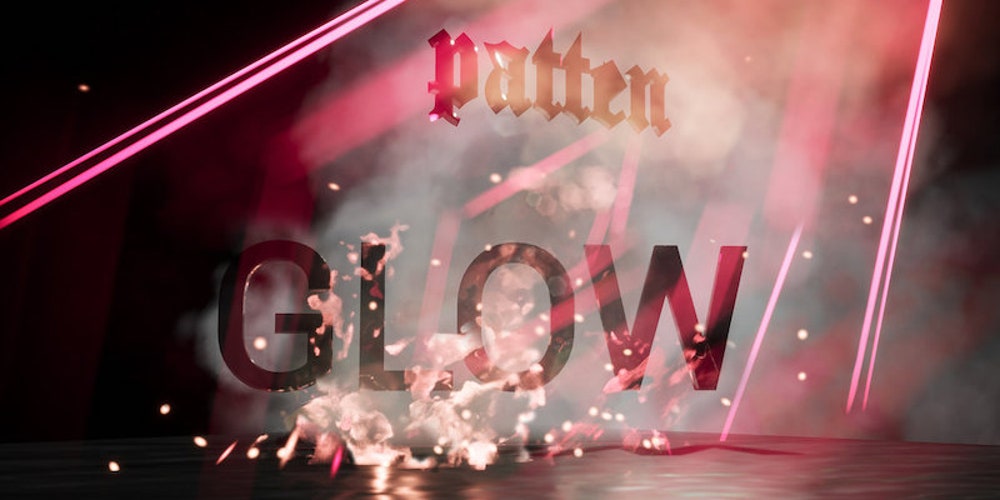One unforeseen side effect of the pandemic is that our collective sense of time has been thrown out of whack. The arrow of our days no longer flies true; it moves more like a crinkled paper plane—soaring briefly, plunging without notice, skidding gracelessly sideways across the floor. Sometimes it seems almost to loop backward. The London producer patten’s GLOW, recorded entirely during the UK’s lockdown, is propelled by this elastic timekeeping and steeped in the uneasy mood of the day. Created using a relatively stripped-down palette of synthesizers, it features almost no drums but could not quite be called ambient. It is restless in places and directionless in others; the mood is emotionally numb, except when it is sullen. Sometimes it is even a little boring, but not in an unpleasant way. Like a ticking clock in a quiet room, its blankness is the sort that leads the mind to wander. And the chance to wander, these days, is to be prized.
The absence of beats marks a notable shift for patten. On early albums like 2011’s GLAQJO XAACSSO and 2014’s ESTOILE NAIANT, which kicked off a brief tenure on Warp, he harnessed a welter of hyper-compressed, low-bitrate sounds and squished them into a lumpy sort of beat music: Imagine a fistful of lossy YouTube rips fed through a Play-Doh noodle maker. Last year’s Flex took a step away from the psychedelic murk of those albums, incorporating the icy clarity of trap and grime along with some of the brawn of breakbeat-driven bass music. The results often sounded less original—and less interesting—than his foundational work. But with GLOW, patten reconnects with the fundamental sense of strangeness that has run through his best music, even without the tangled rhythms and messy textures that once were his stock in trade.
On most of GLOW’s 14 tracks, patten plays his cards close to his chest. Each song is made up of a slim handful of moving parts that tend to spin slowly and aimlessly in place; loops trundle along in parallel, patterns stumbling almost imperceptibly. These sequences and arpeggios sound less like impeccably executed digital commands than the product of fingers idly drumming against the keys, the musician half-asleep in the studio chair, deep into the small hours of the night. There are no big emotional payoffs; most tracks just play out until they don’t anymore. In “Clandestine Modal,” distortion gradually creeps across an expanse of airy synths, covering them in fuzz, like mold consuming a piece of fruit. “Screen Burn,” mostly just heavy pads and buzzing FM bass, spins like a leaden mobile in thick, humid air. “Rorschach” suggests the theme from The Exorcist played on kalimba and run through dub delay, underscoring the anxious, horror-film mood that lies just below the album’s surface.
Many of these pieces could work well as film cues. That goes equally for the simplest tracks—like the dissonant “Chronoblur,” its reverb as opaque as a frosted window—and the few that are more complex. “Memory Palace” unfolds with a particularly gratifying unpredictability, playing a garbled guitar melody off fluorescent-tube hum, like Oneohtrix Point Never remixing the Cure’s Pornography. “Valley Commerce” is even better. Over plodding, minor-key piano and soft horns, a palm-muted guitar rhythm rises in the mix, triggering unexpected memories of ’90s alt rock. It’s an attention-grabbing climax on an album that mostly keeps drama at arm’s length.
Despite patten’s description of the record as an album with “no beats,” the faintest outline of a drum pattern appears on the penultimate track, “Lariat,” where rigid eighth-note hi-hats tap insistently against a gelatinous synth figure, as though determined to rein it in. Behind that, a fragment of what sounds like voice is spun backwards and forward, over and over, suggesting a bored filmmaker slumped over the edit bay, toggling a snippet of video back and forth. It’s an effective encapsulation of GLOW’s entire outlook: stuck in place, marking time, and stolidly waiting—for what, exactly, nobody quite knows.
Catch up every Saturday with 10 of our best-reviewed albums of the week. Sign up for the 10 to Hear newsletter here.
